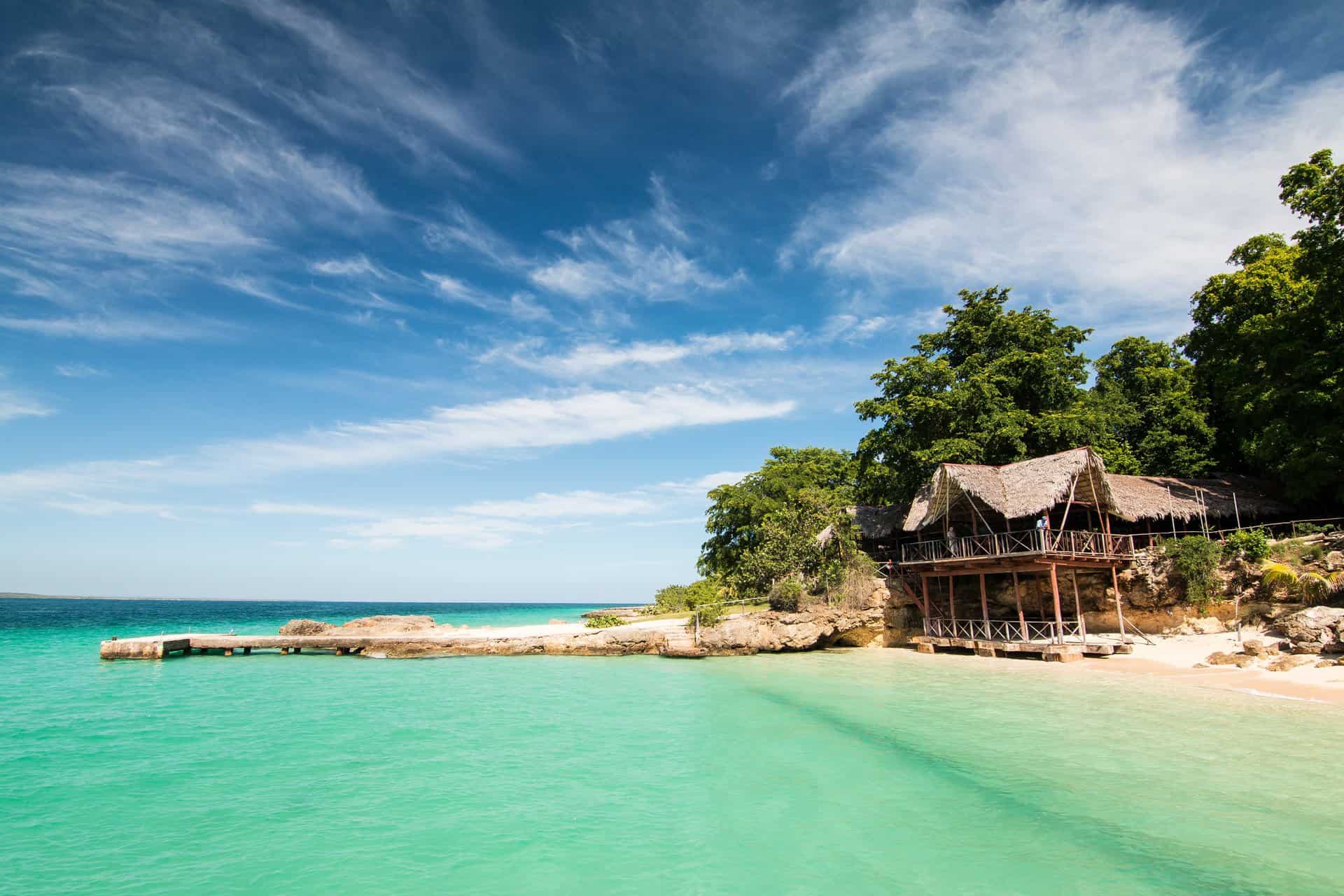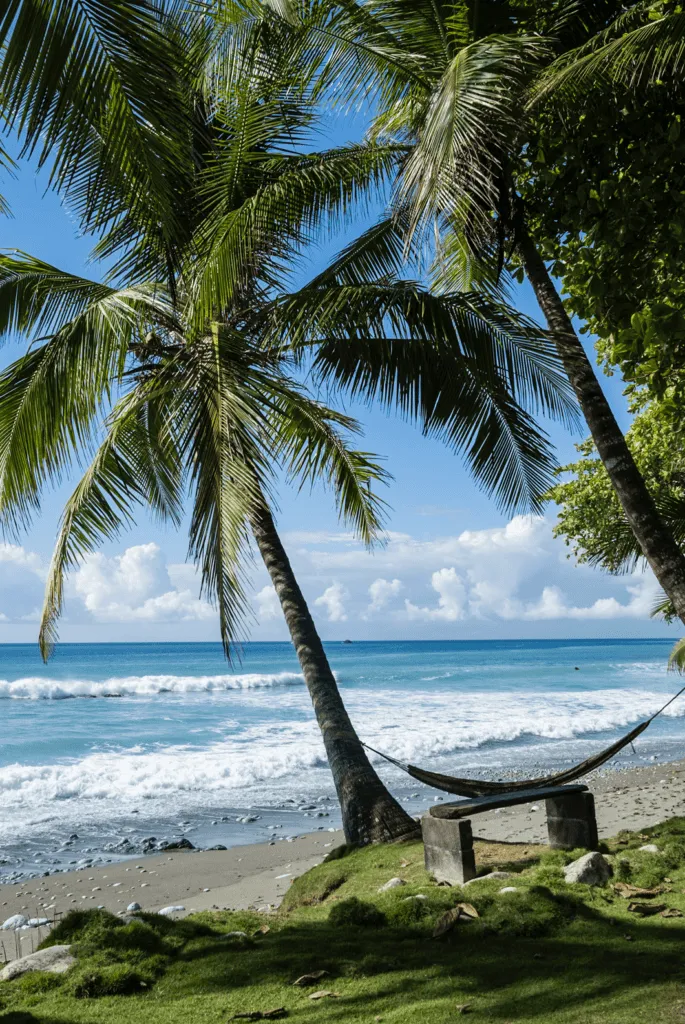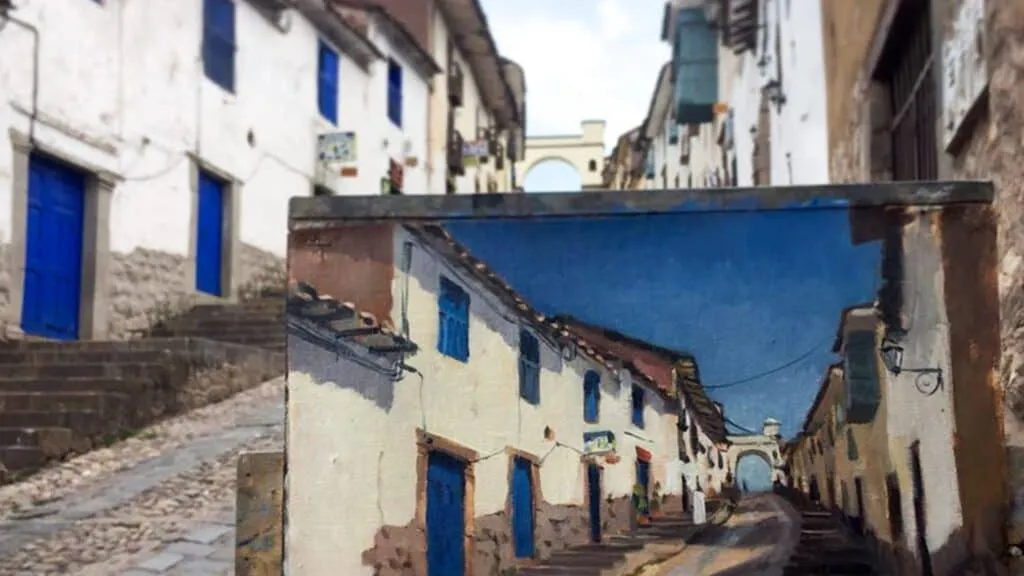
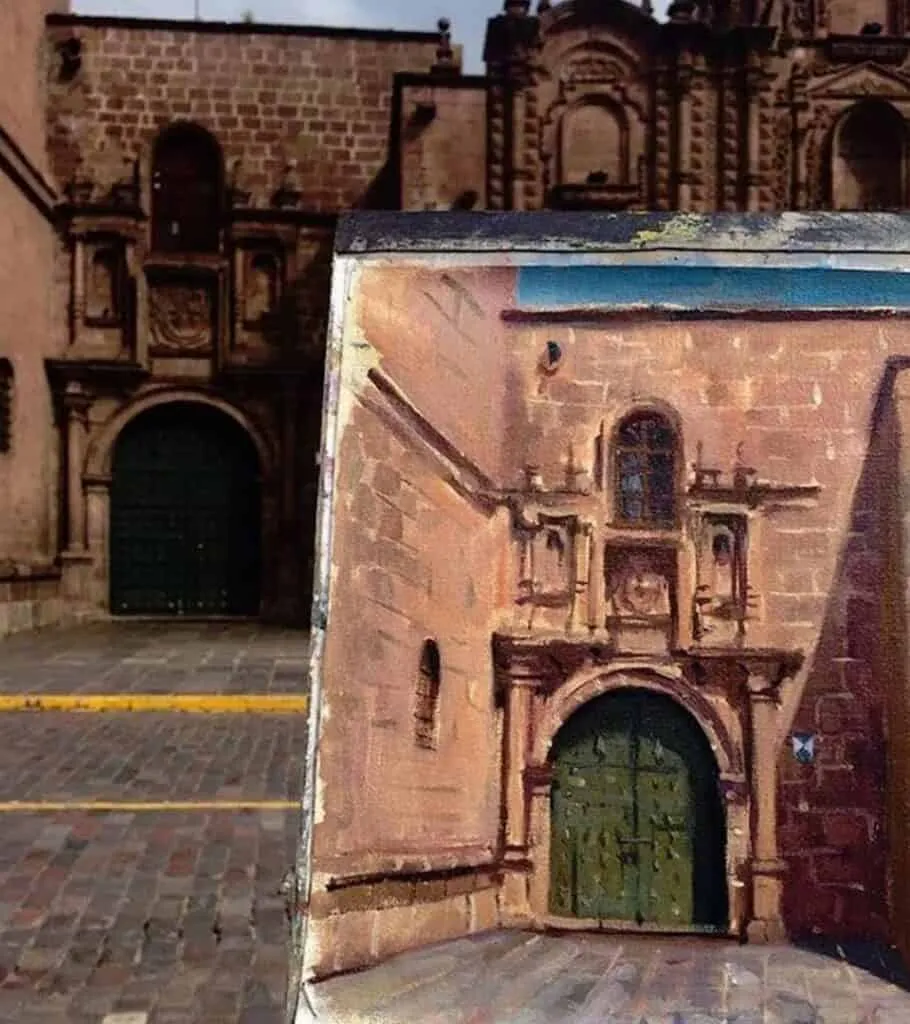
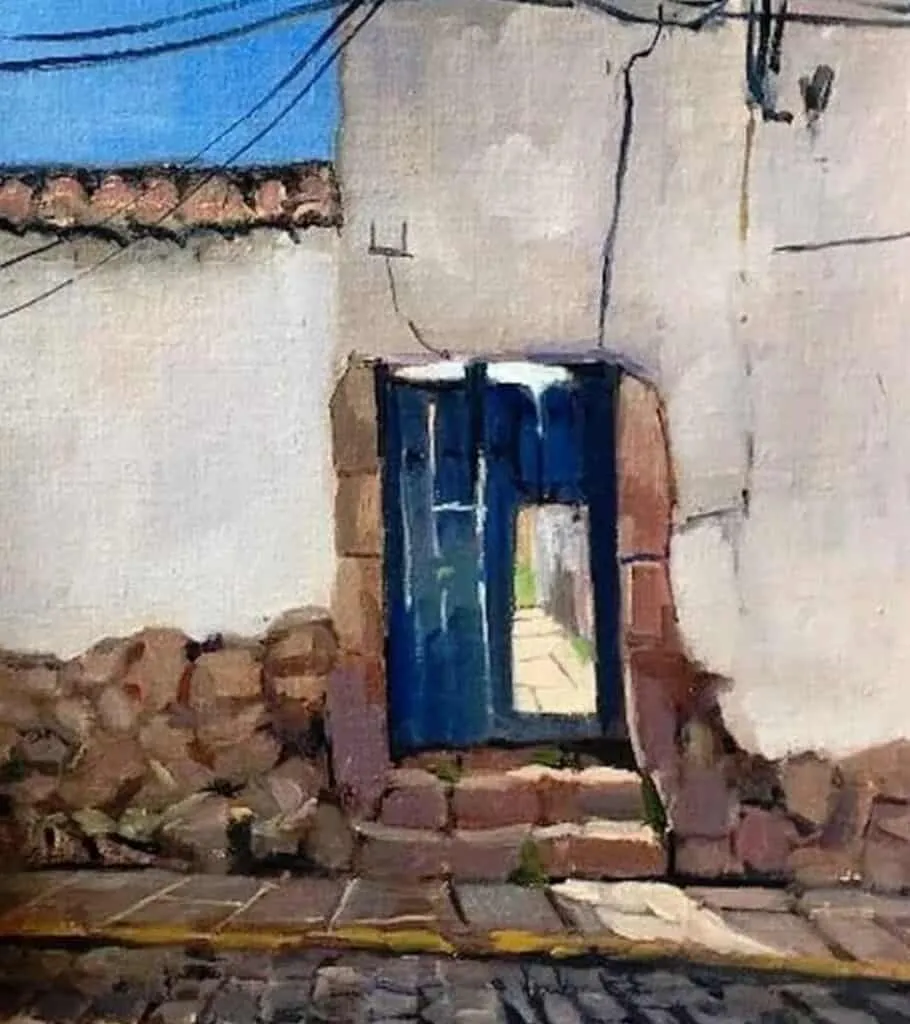
London-based artist, Alice Boggis-Rolfe, packed up her brushes in early 2017 to head off on an adventure around the world.
She typically carried her paints wherever she went, working very fast, on site, whatever the weather. Back in London now, busily arranging a solo-exhibition for November, she met with Plan South America to discuss the highlights of her painting experiences in Peru. From the fading colonial grandeur of Cuzco and Havana to meetings with tribal women in the remote corners of the Andes, Alice shares the moments that inspired her along the way.
Sitting in her home – also her studio – I am transported to a more exotic place altogether. This is clearly an artist’s home. Beautiful rugs of every colour and intricately embroidered throws adorn the floors and sofas; the walls a myriad of paintings and hanging crockery. Studying the stack of paintings waiting to be framed, I notice how perfectly she captures subtle expressions on the faces of those she met, the morning light on a cobbled street and the colours of an overflowing street market.
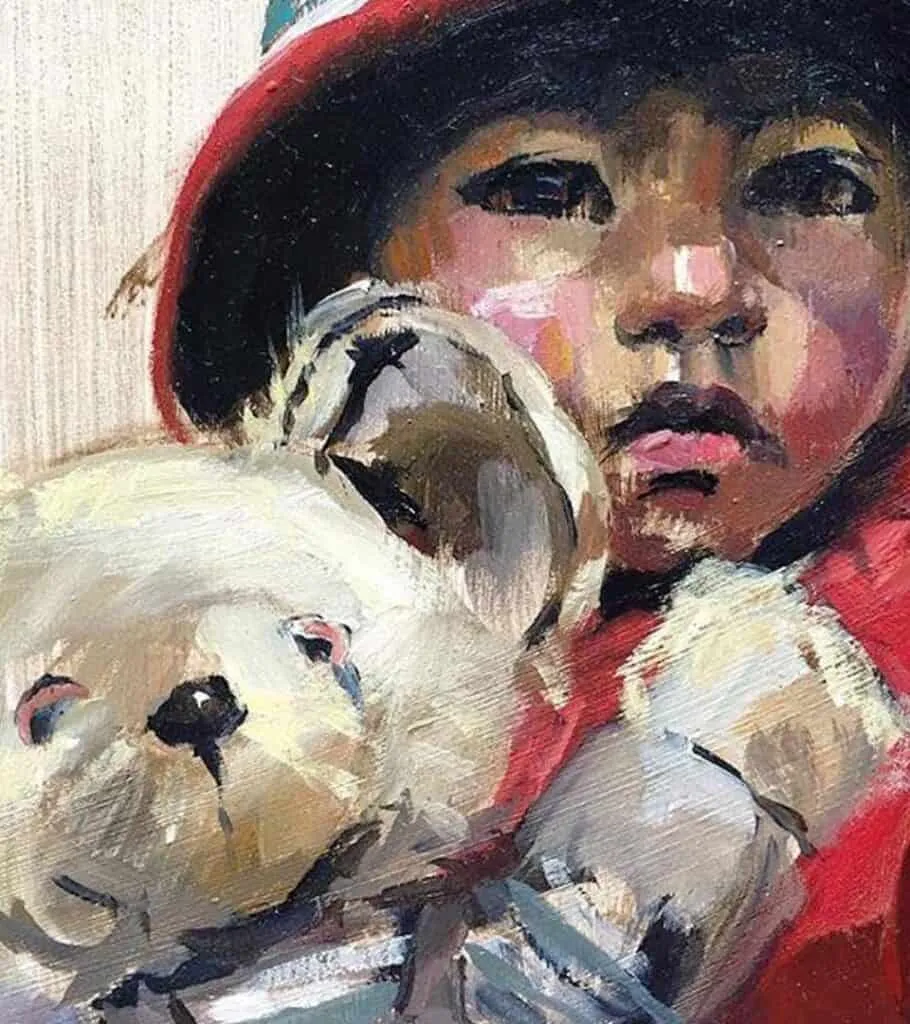
1. What inspired you to become an artist and how do you choose what subjects to paint?
“I’ve always wanted to be an artist, so there’s no long answer to that. But choosing subjects – that’s the hard bit, and I end up walking around for hours looking for places. Sometimes I’ve gone to where I’ve been told there’s a beautiful site but then turned around to find that actually the petrol station behind me that’s catching the evening light looks more interesting. Or sometimes I see a view that I want to paint, go back the next day because I didn’t have my equipment, and it’s just not right; it was only because there was a man there in a red t-shirt walking past – something special about the moment. It’s all about timing, atmosphere, and weather.”
2. Why Peru?
I’d never been to South America and was trying to do all the different corners of the globe in one go, scratch the itch in every direction. It started off with two countries, then it grew to five. Peru was the place that had been most recommended, for its geography but also for its history and culture; Inca civilisations, mountains and the colonialism, which makes a great painting.
3. I think of you predominantly as a landscape painter, is that right?
I was before I went, but actually from travelling I realised that I can paint a scene in the Andes and it can look like I’ve only been to Scotland…! My choices definitely changed and I actually found that the grotty street scenes, markets, and people ended up being the most interesting aspects and much more my thing.
4. What was the most memorable site you painted on your travels?
It would have been Machu Picchu, except it was really foggy when I got to the top. Having carried my paints up there I probably couldn’t even see 3 metres ahead – so it wasn’t that! Painting tribal women in the Andes was beautiful. On the Lares Trek we ended up deviating off course because I stopped to paint this woman, and then the granny, and so we thought let’s just stay the night here instead. We pitched our tent in their barn and I painted her whole family which was a really cool experience.
5. Tell me more about the people you encountered on the Lares Trek?
“Meeting the people along the way was amazing; some of them didn’t know where Lima was or what Lima was – they’d never been to a town. There was one woman sitting looking really confused at the top of the mountain. It was incredibly foggy and atmospheric and she was wearing all her colourful traditional clothes. My guide was talking to her and explained that she’d had a really sore finger for some time and she didn’t know what to do about it, so she’d cut it off… And because of the damp conditions, it wasn’t healing. That was one of the things that really struck me, I’ll never forget it.
There was also a child I met who I painted a picture of – she was small, around five years old and holding a teddy bear – really sweet and a bit shy. And she was about to go into the house to start cooking dinner for when her parents got back, which is normal, apparently. I was eating a tangerine and gave her a segment, to which she asked for another segment – she then wrapped this up in a hankie to give to her brother that evening. I thought it was so sweet and kind – have you ever done that for your siblings?”
6. You spent quite a bit of time in Cuzco, what do you particularly love about the city?
“I spent most of my time in Cuzco and loved it. Every single corner and street is just begging to be painted. The light was really nice, although it rained first thing in the mornings. I became completely obsessed with these doorways everywhere, which I didn’t realise until after I came back and looked at my work. Either you get a beautiful old colonial doorway going into a church or cathedral, or just these old rustic ones with these enormous carved lintels on top, leading to alleyways and grand houses. The cobbled streets going up hill were pretty cool to capture, and the local fruit and vegetable markets as well. That was actually so fun, putting up my easel in the street with all these people who at first were really suspicious, thinking what on earth is this woman doing and why’s she down this end of town? Then by the end I had crowds of people getting so excited saying ‘put my friend in’ and ‘oh some bananas, put those in too!’.”
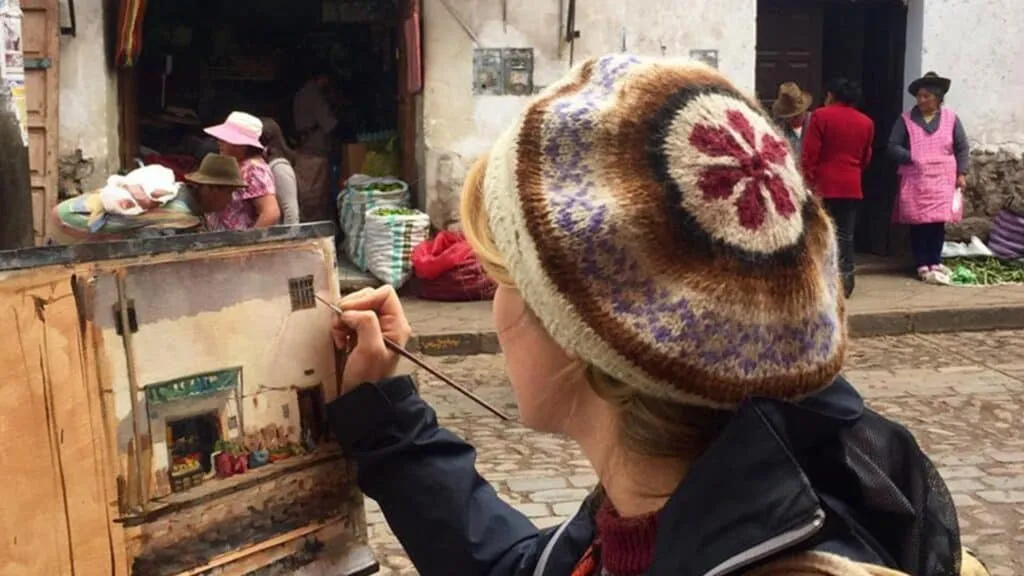
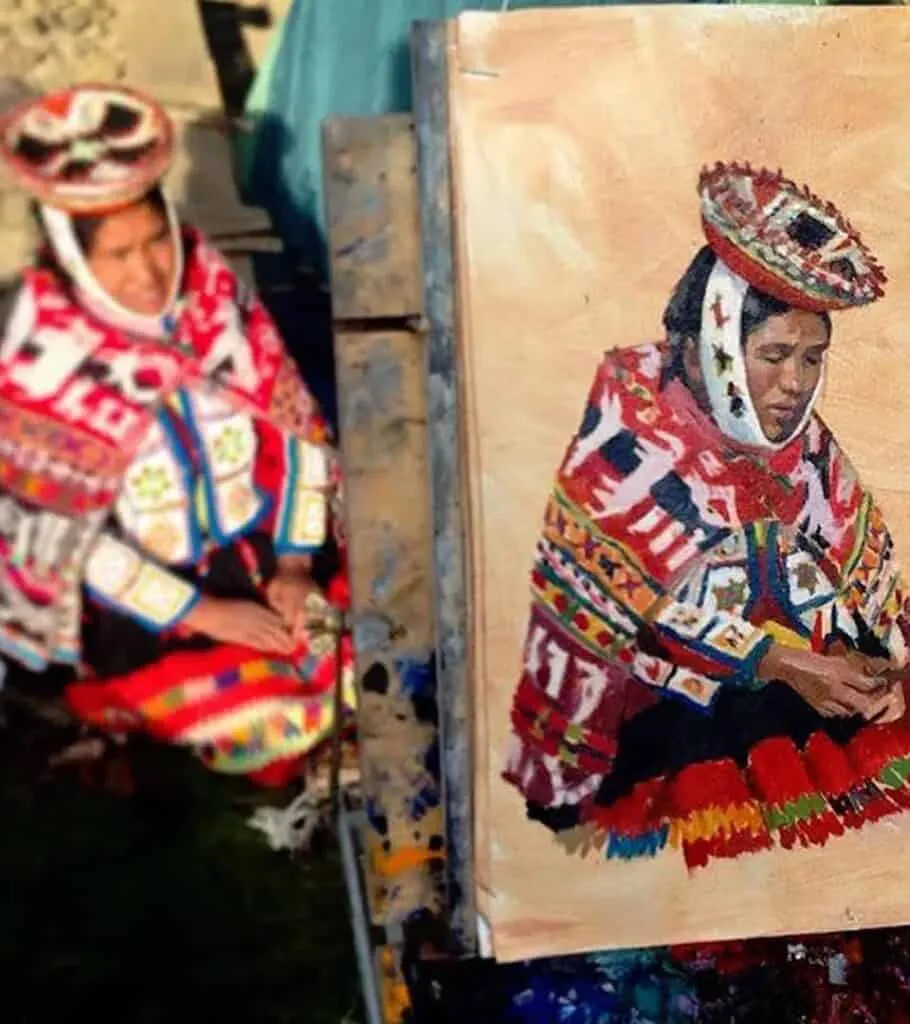
7. Such a special way of breaking the barrier between tourists and locals…
“I found that as an artist there’s no language barrier – you can paint somebody’s friend with their motorbike into your picture and you don’t have to say anything for the crowd to get so excited and start roaring with laughter and pointing. And then somebody else goes round and jumps into the picture – it’s a relationship that you’d never get doing anything else.”
8. Do you feel Cuzco lends itself as an artists’ destination?
“It really does and there are loads of art material shops. I met lots of local artists, usually just spotting studio signs over a little souvenirs shop, and I saw lots of the places they painted, which was very inspiring. I developed quite a funny relationship with some of the artists as I was there for a couple of weeks. They would come up to me with portfolios saying ‘let me sell you some paintings!’, and I would say ‘No, I’ve got my own to sell!’. So, then when they’d next see me they would say ‘Ah, it’s the artist, let me sell you some pictures that are better than yours!’.”
9. From your paintings, it appears that you seek out places of hidden beauty that might otherwise go unnoticed – secret courtyards and hidden passages. Is that intentional?
I didn’t want to end up painting glorified postcards around the world. Having thought I’d end up doing most of the main landmarks to maybe prove a point, actually, I didn’t. As much as I was miffed, as it would have been really cool painting Machu Picchu, I don’t feel hard done by. I don’t feel that would have really illustrated my experience of Peru in the way that the streets and people did. What really interested me as a painter were those little rustic streets in the areas that were less done up for tourists – more peeling paint, less restoration.
10. For art lovers are there any places you feel can’t be missed?
I loved the Museo de Arte Pre-Colombino – really cool and beautifully done. The Inca museum was sadly falling apart, but this collection was in a stunning building and I’d definitely recommend it.
11. What did you do when you weren’t painting?
The shopping in Peru was so good – I sent home boxes and boxes of things, carpets that I really shouldn’t have bought in the most lurid bright greens, but the stuff they make is just so beautiful and so much is still made by hand. So I did a lot of shopping and went to all of the markets sourcing knitwear and carpets. The food in Peru deserves a special mention as well!
12. Is there a painting that you’re particularly pleased with from your trip?
I’ve done a really big one of Cuzco that I’m really pleased with, early in the morning when they’d just started opening up all their shutters and hanging out the laundry. There are so many things I get excited by and want to put into my pictures, but there’s such limited time before the light changes – that’s the nature of painting outside. I don’t like going back to a place because I find it boring and it never looks the same. I think atmosphere is what’s important rather than what’s actually there, so the light or perhaps there’s a storm about to come in. Or you’re so desperate for the loo that you have to pack up and go!
13. I love that you can just set up wherever you are and start painting…
“Yes – that’s what I couldn’t do in Japan, they got really angry about it. Coming up and tapping me on the shoulder saying ‘no sketch’ – rather annoying…
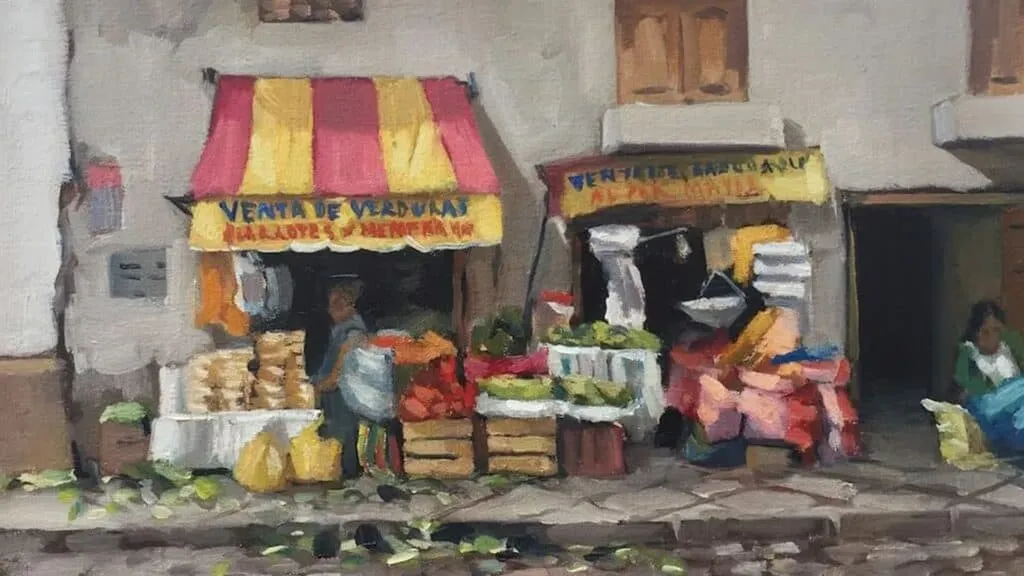
14. You’ve been all over the world painting incredible places. How did Peru match up as a destination?
Cuba and Peru were my favourite places because I did so much work in both of them, I’d really got to grips with it by then. And just the colours and the light and the peeling paint and history. There are layers of history in those sorts of places which is just fascinating. You have a beautiful old colonial building, old decaying grandeur, which is now a slum and inhabited by people that still see it very much as home. And then all the layers of peeling paint on the outside metaphorically remind you of the layers of history in these countries, which is so wildly different to other places I’ve been. I really enjoyed trying to put that into paint.
15. Tell me about your upcoming exhibition?
I’ve been trying to keep the exhibition under wraps, but I have quite a lot reserved already. The exhibition is at the end of November, on the King’s Road at Box Galleries, it’s going to be entirely works from my travels. I’ve done solo-exhibitions before, which is great – lots of work, but I’m really looking forward to it.
16. Shall you be returning to South America do you think?
Definitely. South America had never tickled me before, I’d always been obsessed with Asia, but then when I got there I was completely bowled over. I’ll possibly go back as soon as January once the exhibition’s over and I’ve had time to plan. See ya later England! Maybe Colombia next – I’ve heard great things and I’d want to explore it fully. There’s never enough time, and I hate it when people say ‘I’ve done Peru’ – no, no, you’ve just scratched the surface…
We can’t wait for the unveiling of Alice’s solo-exhibition in London in November and we will be following her work as she continues to paint around the world. Take a look at Alice’s blog from her travels.
Would you like to focus your next trip on painting or indeed discovering local art? Contact our team of specialists to discuss Art Travel in South America.
Related Stories
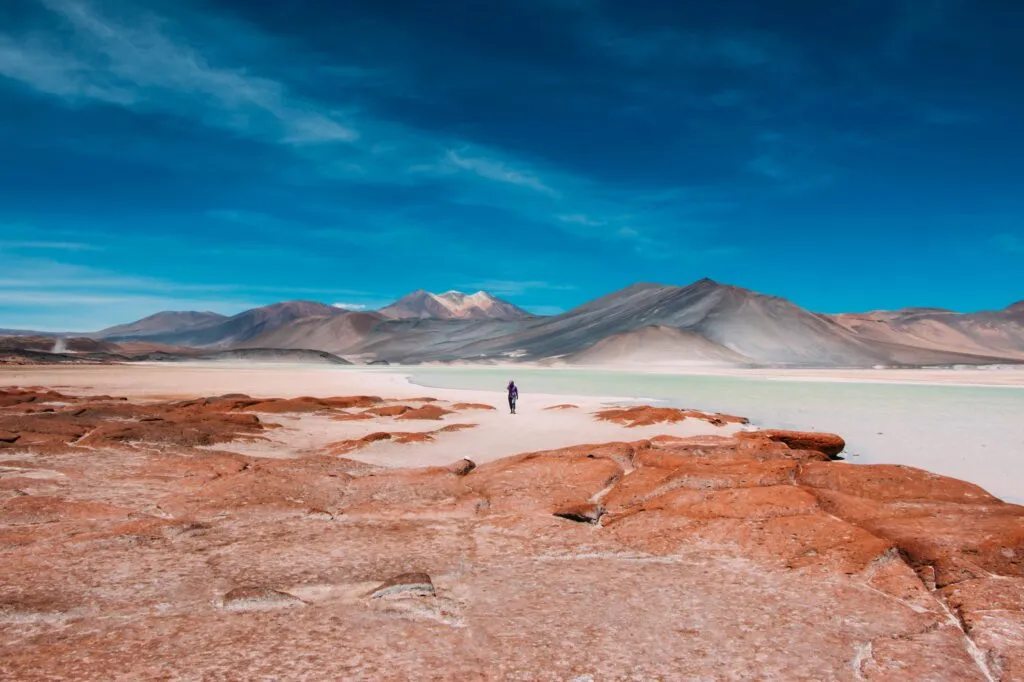
The Insider’s Guide to Chile’s Atacama Desert
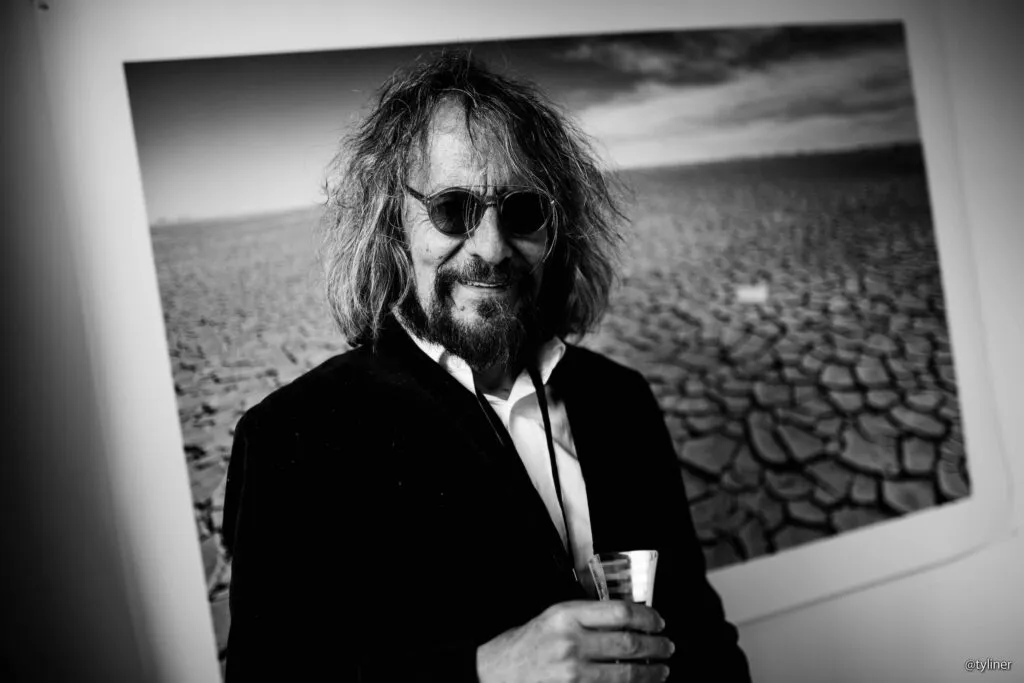
Discovering Gaston Ugalde: Bolivia Through the Eyes of the Andean Warhol
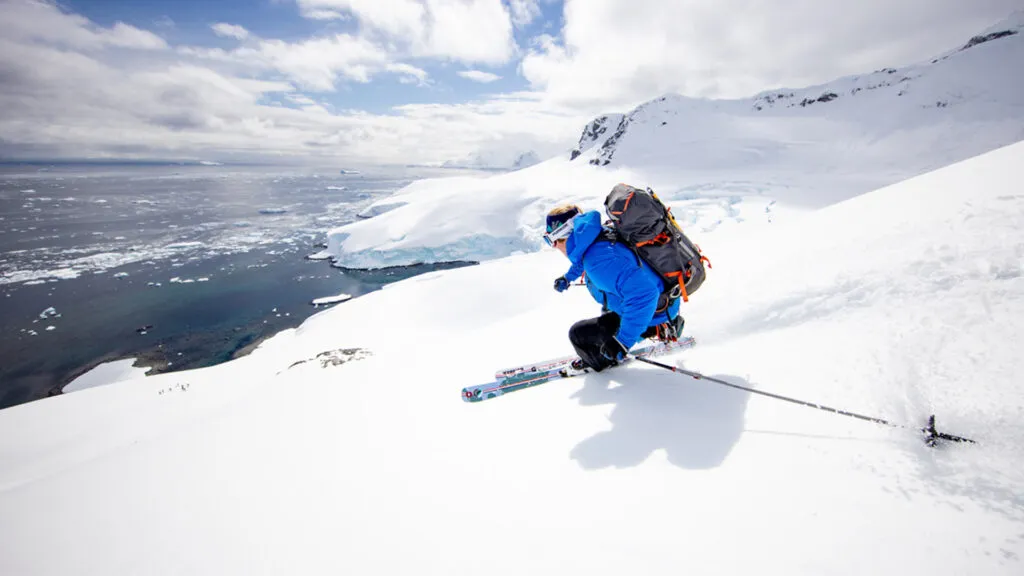
Where to Ski in South America
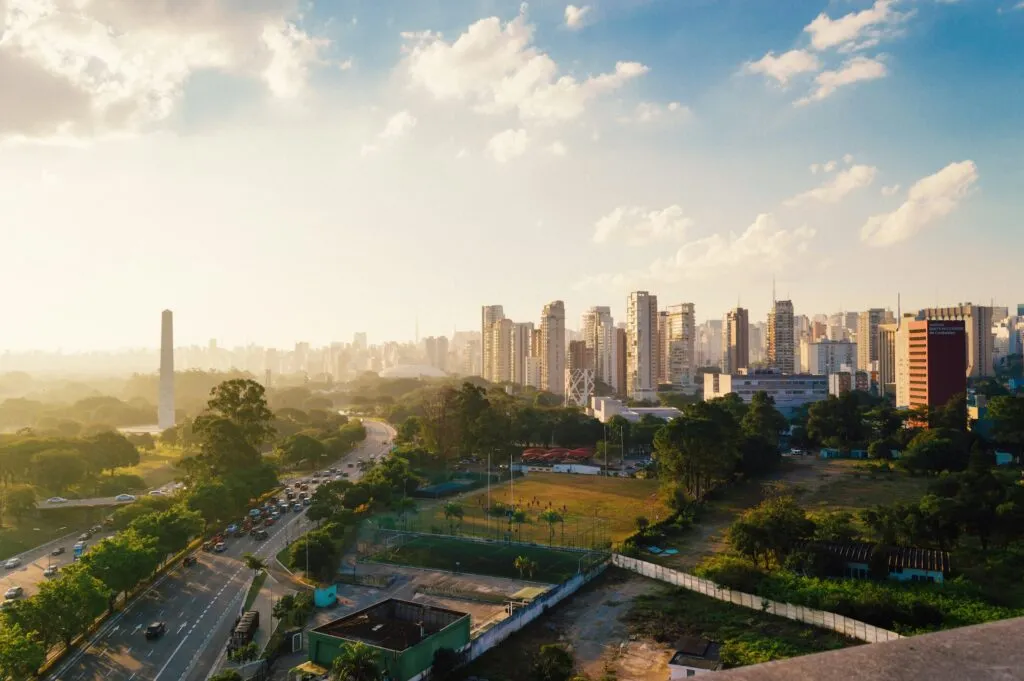
How to Spend a Weekend in São Paulo: An Insider’s Guide
@plansouthamerica
